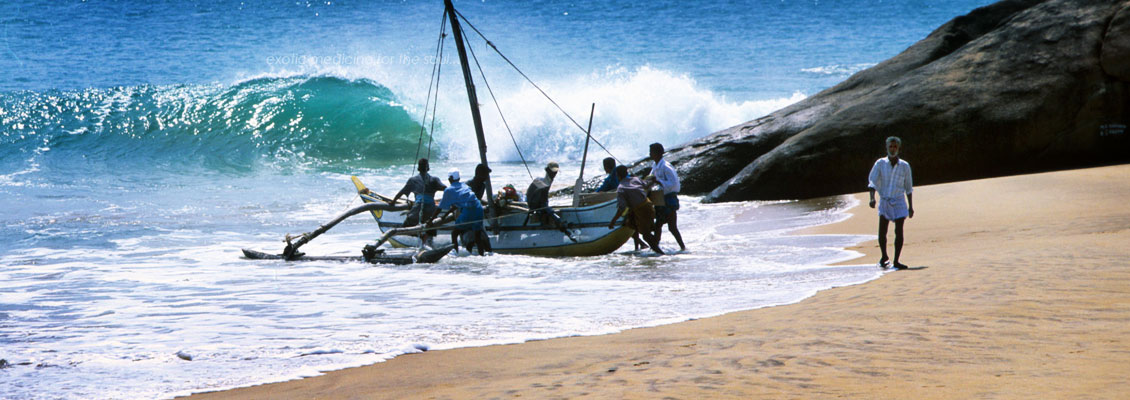AMBALANGODA
A half hour’s drive from Bentota is Ambalangoda, home of the traditional mask-makers, devil dancing and of puppet shows. The gaily-colored masks are usually worn by dancers performing exorcism ceremonies and reflect the craftsman’s skill. They range in height from a few inches to three feet and make wonderful wall hangings.
The town is a center for a still-thriving form of southwest-coast folk art: mask carving and dancing. The two are inextricably linked.
There are two totally different types of dance-dramas in the area: kolam, uplifting and instructional, and sanni yakuma, a form of ritual healing through exorcism. Kolam plays always require the figures of the king and queen, since they are said to have invented the mask dances. The royal couple wear very elaborate, high masks, and move accordingly with slow dignity. They form a framework for various funny, serious or didactic Buddhist dance-dramas, usually set in a village environment.
The sanni yakuma actually belongs to the area of traditional medicine. If a sick person does not get better after either Ayurvedic (traditional treatment using herbal medicines) or taking Western medicines, this is thought to be due to demons who interfere with the relationship between the sick person and his social environment, thus causing illness. The ritual, in which not only the performance of various dances but also cleansing ceremonies play an important role, consists of luring the demons, appeasing them (paying!), and finally driving them away. The leader of the 18 sanniyas, or illness demons, is called Maha Kola. His mask face is frightening; it also bears the 18 sanniyas, nine on the left and nine on the right, each of them representing a different illness. In addition, each individual sanniya has its own characteristic mask. You can buy an informative booklet about masks and dances at the museum.

